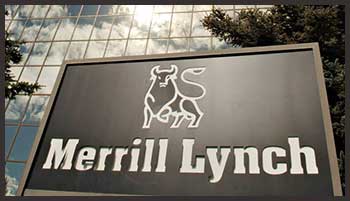When it comes to choosing an investment firm to manage your wealth and investments, two big names often come up – Merrill Lynch and Raymond James. Both firms have been around for decades and manage billions in client assets.
But they have some key differences that investors should understand before deciding which is a better fit.
A Brief Comparison Table
| Category | Merrill Lynch | Raymond James |
| Company Size | $2+ trillion in client assets | $1+ trillion in client assets |
| Account Minimums | $100,000+ | $2,500+ |
| Management Fees | 1% – 2%+ | 0.6% – 1.5% |
| Investment Products | Very extensive | Broad selection |
| Research Capabilities | Large research team, extensive reports | Modest research capabilities |
| Advisor Support Resources | Robust support teams and tools | Solid support but less than Merrill |
| Brand Awareness | Strong, well-known brand name | Growing brand, less recognizable |
| Accessibility | Caters to high-net-worth investors | Open to smaller investors |
| Geographic Coverage | National reach with many locations | Fewer physical locations |
Overview Of Merrill Lynch
Merrill Lynch is one of the largest investment firms in the world. Founded in 1914, it manages over $2 trillion in client assets and employs over 14,000 financial advisors. Merrill is owned by Bank of America and offers a full range of investment services including stocks, bonds, ETFs, mutual funds, retirement accounts and more.
Some key advantages of Merrill Lynch include:

- Large company with lots of resources – Being part of Bank of America gives Merrill Lynch huge amounts of capital, research capabilities and access to almost every investment product available. This breadth of resources benefits clients.
- Reputable brand name – Merrill Lynch has been around for over 100 years and is a recognized leader in wealth management. This established brand builds trust with clients.
- Extensive research – Merrill Lynch employs hundreds of research analysts who produce market insights, investment analysis, and financial models to inform investment decisions. This robust research is invaluable.
- Wide array of account options – From basic brokerage accounts to complex trust services, Merrill Lynch offers a huge selection of account types to meet varying investor needs.
- Banking integration – Since Merrill is owned by Bank of America, things like checking accounts and credit services are seamlessly integrated for a simplified client experience.
Potential downsides of using Merrill Lynch include:
- High fees – All the resources of Merrill Lynch come at a cost. Management fees on investment accounts tend to be higher than competitors.
- Account minimums – To work with Merrill advisors requires having tens of thousands of dollars minimum to invest. Smaller investors may not meet account minimums.
- Incentives to sell proprietary funds – Some advisors may push Merrill owned investment products rather than recommending what’s best for a client’s needs.
Also Read: Comparison Between LPL Financial And Merrill Lynch.
Overview Of Raymond James
Raymond James is another large investment firm founded in 1962. It manages over $1 trillion in client assets and has over 8,200 financial advisors globally. Raymond James offers similar investment services to Merrill but has a different approach to serving clients.
Some advantages of working with Raymond James are:
- Lower account minimums – Raymond James allows people to open investment accounts with as little as $2,500. This makes them accessible to smaller investors.
- Fee-based accounts – Raymond James offers fee-based accounts where you pay an annual % of assets versus commissions. This can cost less for active traders.
- Client-focused culture – Raymond James advisors are given freedom to recommend any financial products that are suitable. They don’t push proprietary funds.
- Awards and ratings – Raymond James consistently earns high marks from groups like JD Power for client satisfaction. Their client-first approach builds trust.
- Planning services – Raymond James goes beyond just investment management to offer clients financial planning for goals like retirement, college savings, insurance needs and more.

Some potential cons of Raymond James are:
- Smaller scale – With less scale than Merrill Lynch, Raymond James can’t deliver the same breadth of resources and research capabilities.
- No banking integration – Raymond James only provides brokerage and investment services. For banking needs, clients need to go elsewhere.
- Less geographic coverage – With fewer brick-and-mortar locations than Merrill Lynch, Raymond James has a smaller physical presence making in-person meetings less convenient.
- Technology gaps – The technology platforms and apps provided by Raymond James have lagged behind some competitors. But significant improvements are being made.
Now that we’ve compared the key pros and cons of Merrill Lynch and Raymond James, let’s directly compare them across a few important factors for investors:
Detail Comparison Of Merrill Lynch And Raymond James
- Fees and Commissions
Merrill Lynch is more expensive when it comes to fees, account minimums and commissions. You’ll need at least $100,000 to work with a Merrill Lynch advisor directly. Account fees can range from 1% to over 2% annually depending on account size and activity level. Raymond James has lower minimums of just $2,500 and fee-based accounts can cost as low as 0.6% annually. The more trading activity, the wider the cost difference.
- Investment Products
With its huge scale and resources, Merrill Lynch offers just about every investment product imaginable. Raymond James has a smaller line-up of investment options but still sufficient choice for most investors. Both firms offer stocks, bonds, mutual funds, ETFs, options, and retirement accounts. Merrill may have more exotic institutional products hard to find elsewhere.
Also Read: Comparison Between UBS And Merrill Lynch.
- Research and Insights
Merrill Lynch spends over $500 million annually on market research and employs hundreds of investment analysts. It produces reams of reports, models, earnings estimates and proprietary data. Raymond James spends a fraction of this on research and offers less breadth and depth of analysis for clients.
- Advisor Support
Because of its greater scale, Merrill Lynch can provide its financial advisors with more support resources. This includes dedicated support teams, administrative staff, proprietary tools and software, and extensive training programs. Raymond James still provides ample backup to advisors but with fewer assets under management it’s not as robust as Merrill.
- Brand Strength
Merrill Lynch wins when it comes to brand recognition and awareness. After over 100 years in business, Merrill Lynch is a storied name in finance that resonates with investors. While respected, Raymond James as a smaller firm doesn’t have the same brand clout.
- Accessibility
A key advantage of Raymond James is its lower investment minimums and account balances. Merrill Lynch requires higher minimums for its advisors, often $250,000 or more. Raymond James minimums can be as low as $2,500. This lets more investors access quality advice.
Here is a video of Merrill Lynch!
Frequently Asked Questions (FAQ)
Raymond James is smaller than Merrill Lynch and can’t match its scale. But Raymond James offers lower fees, sets lower account minimums, and has a client-focused culture. For active traders or smaller investors, Raymond James may be preferable.
Raymond James is a respected, trusted investment bank that manages over $1 trillion in client assets. It offers all the traditional investment products and services investors need. While not as large as competitors, Raymond James has received strong marks for client satisfaction.
Compared to other large investment firms, Raymond James offers competitive fees with low costs. Their fee-based account options cost as little as 0.6% annually which is inexpensive for professional management. Lower fees make Raymond James enticing for many investors.
With over 100 years in business, Merrill Lynch has a stellar reputation as a leading investment firm. It’s a recognized financial brand name that carries weight with investors looking for trust and confidence. Merrill Lynch maintains high ethical standards and prides itself on professional conduct.
Also Read: Differences Between Edward Jones And Competitors.
Conclusion
When choosing between Merrill Lynch and Raymond James, consider your individual needs as an investor. Those wanting the most investment products, research insights and advisor support may prefer Merrill Lynch. Investors focused on lower fees, greater accessibility and a client-first advisory approach may favor Raymond James.
Think about your investment style, account size and work preferences to determine which firm suits you best.
Both firms can likely meet the needs of most investors. For truly customized advice, have initial conversations with advisors from each company. Ask lots of questions and get a feel for their services and expertise. The right individual advisor relationship is most important, beyond just the name brand of the firm.
